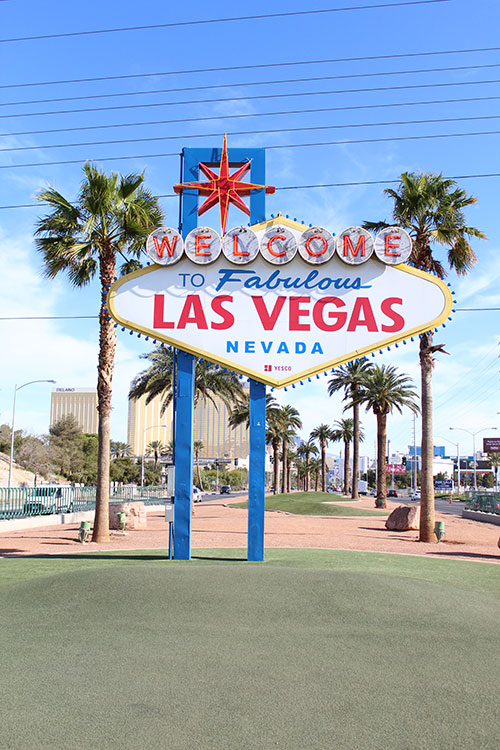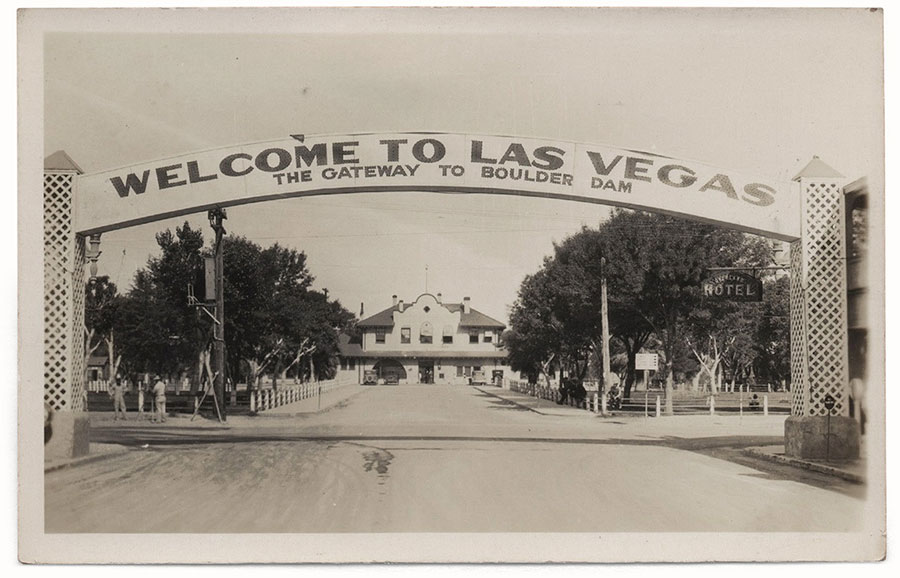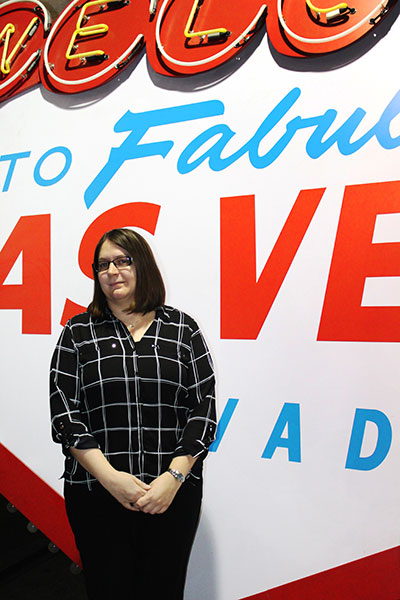Iconic Las Vegas Sign Turns 60
May – June 2019
A fabulous look back at the sign’s history.

BY ANDREA HEERDT
Imagine driving into Las Vegas, and being greeted by a sign that reads “Welcome to Las Vegas The Gateway to Boulder Dam.”
If your drive took place before 1959, that’s what you would have seen at the intersection of Fremont and Main Streets. It wasn’t until the 1950s when the golden age of neon signage—and today’s iconic sign—began on the Las Vegas Strip. In May 1959, a new sign which read “Welcome to Fabulous Las Vegas” was placed on the median of what was then Highway 91. According to the National Register of Historic Places, the sign was strategically placed on the south end of Las Vegas Boulevard so as many touristsas possible traveling from Southern California could see it. This year, the Las Vegas icon is turning 60 years old.
A FABULOUS BEGINNING
In early February 1959, Ted Rogic of Western Neon Sign Company approached the county with the idea of creating a neon sign. The Clark County Commission agreed, and Rogic was awarded the project for a grand sum of $4,000. One of Rogic’s employees, Betty Willis was given the assignment to make the sign as dazzling and eye-catching as possible, according to Tracey Sprague, collections manager of The Neon Museum.
Willis was born in Overton, but moved to Las Vegas when she was an infant and grew up in the city, according to Tracey. During her childhood, Willis’ family frequented theaters on vacations, making an impact on Betty’s design style.
“She said in previous oral histories and interviews that she was always kind of attracted to the flashiness of theaters,” says Tracey. “Her family used to go to Southern California regularly, so she remembers that standing out as a child.”
In addition to the sign’s flashing lights and mid-century design style, it also features silver dollars representing Las Vegas’s affiliation with gaming. According to the Register of Historical PlacesBetty also noted in one interview that she added in the Disney star for happiness. The odd shape of hotel key fobs inspired Betty to create the rounded-diamond shape of the sign as well.
Given the popularity of the sign today, it’s strange to think that Betty may have had regrets about her design of the welcome sign. Tracey says that most of the neon signs from that era were only displayed for 10-15 years before being taken down and replaced, and if Betty knew her sign would still be standing, she would’ve changed her design.

Tracey speculates that Betty was probably in a situation where she quickly had to sketch out a drawing for the sign thinking that it was only going to be shown for 15 years maximum, yet that’s not what happened.
“I think it actually says a lot about her being an artist and still being critical about her work even after much time has passed,” says Tracey, “I think [the sign] is traditional mid-century design at its finest.”
LAST OF THE OLD-GUARD NEON SIGNS
As the use of cheaper plastics in signs became more prevalent across America, the neon sign fad began to fade everywhere except for Las Vegas.
“Las Vegas, for whatever reason, held onto [neon] and kept going with it, making it bigger and bigger and brighter,” says Tracey. “You kind of see this juxtaposition of Las Vegas still having all of this neon and the rest of the country slowly switching it out.”

Eventually even the city’s big-time hotels and casinos said goodbye to neon, too. Tracey says that if there’s any neon signage still out there, she wouldn’t call it super famous. All of the notable signs from that era either are in The Neon Museum or owned by collectors, while others are just gone, according to Tracey, leaving just the welcome sign as the only major neon landmark left.
As the welcome sign turns 60 years old, it’s as important to the city today as it was when it was first erected. After the tragic Route 91 Harvest Festival shooting on Oct. 1, 2017, the welcome sign transformed into a makeshift memorial and place of grieving for the city and its citizens.
As a historic landmark, the sign will stand for years to come. None of the original design has changed, but there have been slight repairs and additions like solar panels to power it as the sign fully integrates into the 21st century.
Today, the Welcome to Fabulous Las Vegas sign is easily the most recognizable symbol of Las Vegas, appearing on souvenir keychains and T-shirts, and even the cover of “Time” magazine.

